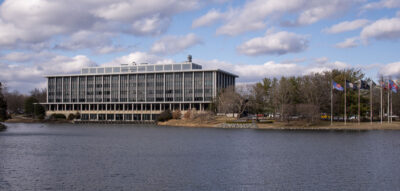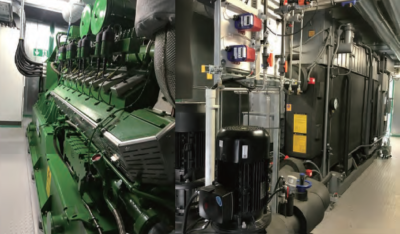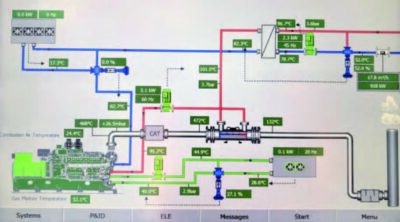Montgomery County Public Safety Headquarters
Project Background
The Public Safety Headquarters (PSHQ) is a landmark building in Montgomery County. Built in 1968, the building is nearly 400,000 square feet, which is the county’s largest and primary administrative facility for a range of critical public services including transportation management, County’s Office of Emergency Management and etc. Maryland is among the states most vulnerable to climate changes. Since 2010 extreme weather events caused at least 26 times power outages in Maryland, including one that lasted 11 days as a result of Hurricane Sandy. In order to mitigate the risks from severe weather events, acts of terrorism and high energy costs, along with the County government’s goal of reducing greenhouse gas emissions 80% by 2027, PSHQ developed an advanced hybrid microgrid combined PV technology with combined cooling, heating and power (CCHP) system. This project is financed at zero upfront cost, which received grants from the Maryland Energy Administration (MEA) and is awarded through a 25-year microgrid as a service power purchase agreement (PPA) that allows the county to pay for the project by purchasing the usage right of the equipment and the energy generated. Also the project leveraged utility incentives by the local utility company Pepco.
System Introduction
The microgrid system includes 2MW solar photovoltaic canopies mounted over the existing parking lot, providing shade to cars while powering the facility. Also a new CCHP system, electric vehicle charging stations and a cyber security system are installed. The microgrid system can generate 11.4 million kWh annually, providing an estimated 90-95% of the facility’s annual electricity consumption and nearly infinite backup capacity with minor adjustments to operations. 2G Energy provided the new 800 kW CCHP package system including a natural gas reciprocating engine, coupled with heat recovery devices to drive a BROAD absorption chiller to supplement existing building chillers. The system comprehensive energy efficiency can reach up to 76%.
Project Details
Generator: MWM
Fuel: Natural gas
Rated power output: 800 kW
Electrical Efficiency: 42.4%
BROAD Absorption Chiller
Model: Single-stage hot water chiller BDH100
Cooling Capacity: 180 RT
Heat Source: Hot water from engine heat recovery loop
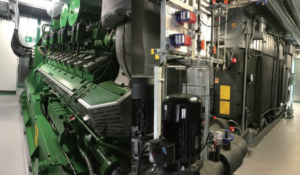
About Microgrids
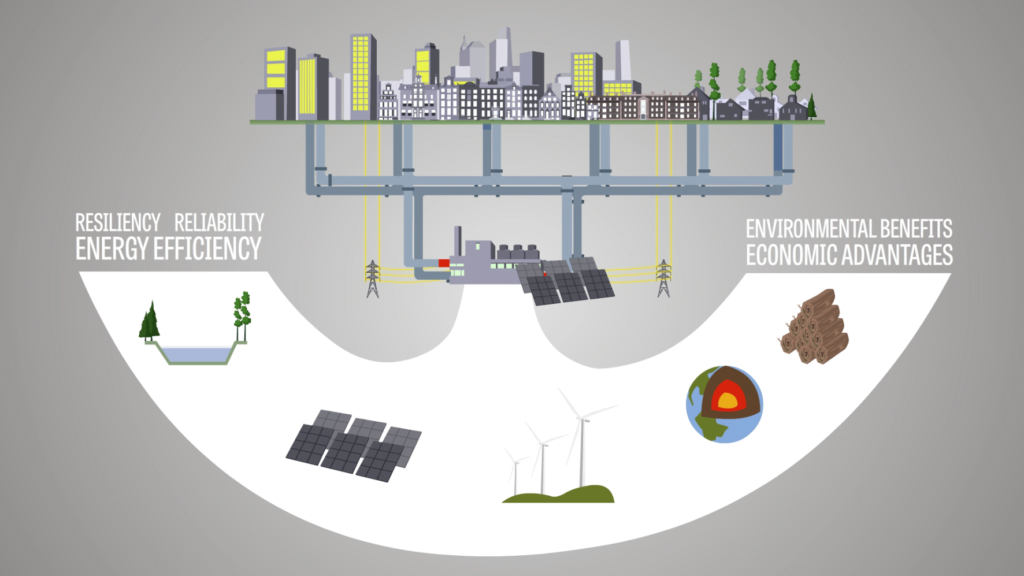
Microgrids are a growing segment of the energy industry, representing a paradigm shift from remote central station power plants toward more localized, distributed generation—especially in cities, communities and campuses. The power to isolate from the larger grid makes microgrids resilient, and the ability to conduct flexible, parallel operations permits delivery of services that make the grid more competitive.
By “islanding” from the grid in emergencies, a microgrid can both continue serving its included load when the grid is down and serve its surrounding community by providing a platform to support critical services from hosting first responders and governmental functions to providing key services and emergency shelter.
Microgrids provide efficient, low-cost, clean energy, enhance local resiliency, and improve the operation and stability of the regional electric grid. They provide dynamic responsiveness unprecedented for an energy resource.
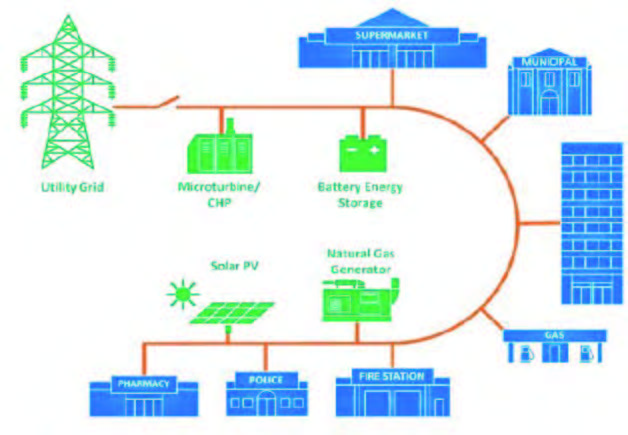
Photo Gallery
Benefits of Microgrid
-
Provide efficient, low-cost, clean energy
-
Improve the operation and stability of the regional electric grid
-
Critical infrastructure that increases reliability and resilience
-
Reduce grid “congestion” and peak loads
-
Enable highly-efficient CHP, reducing fuel use, line losses, and carbon footprint
-
Integrate CHP, renewables, thermal and electric storage, and advanced system and building controls
-
Make RTO markets more competitive
-
Offer grid services including: energy, capacity, and ancillary services
-
Support places of refuge in regional crises and first responders
-
Use local energy resources and jobs
-
Diversified risk rather than concentrated risk
-
Using electric and thermal storage capabilities, a microgrid can provide local management of variable renewable generation, particularly on-site solar
-
When properly designed, a regional power grid that combines both large central plants and distributed microgrids can be built with: less total capital cost, less installed generation, higher capacity factor on all assets, and higher reliability.
